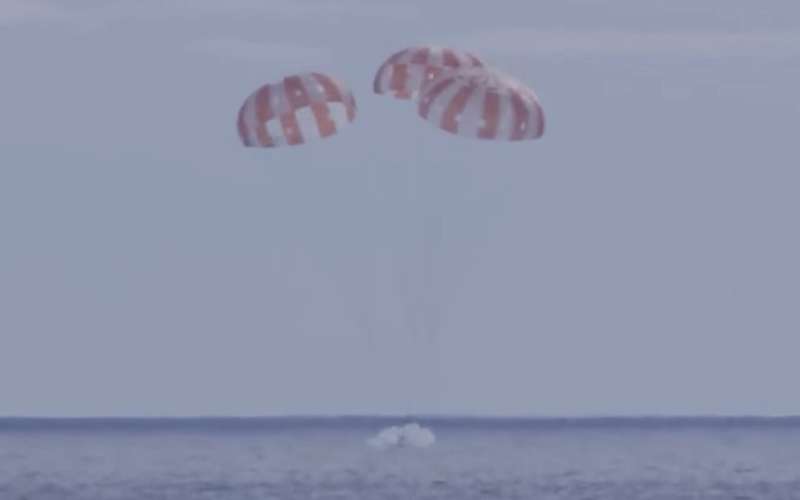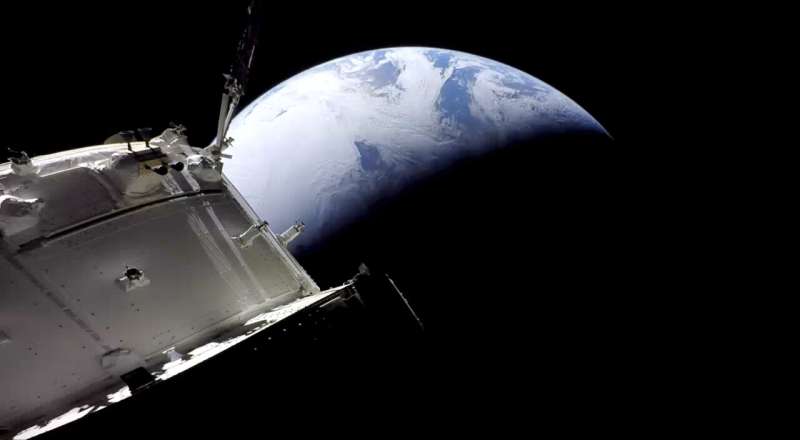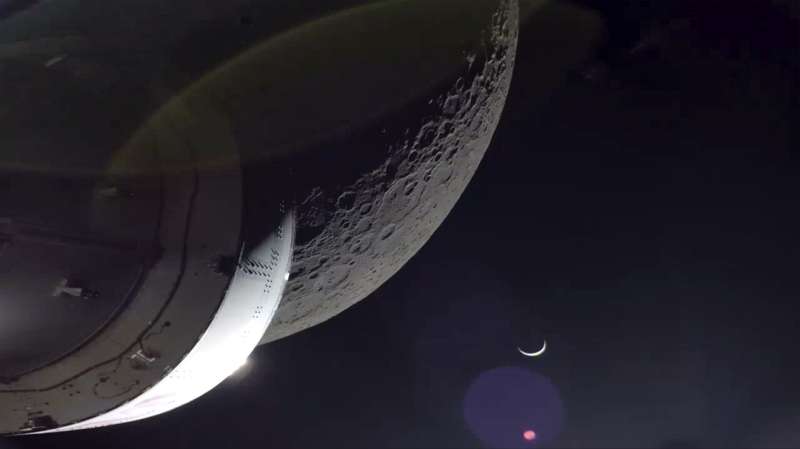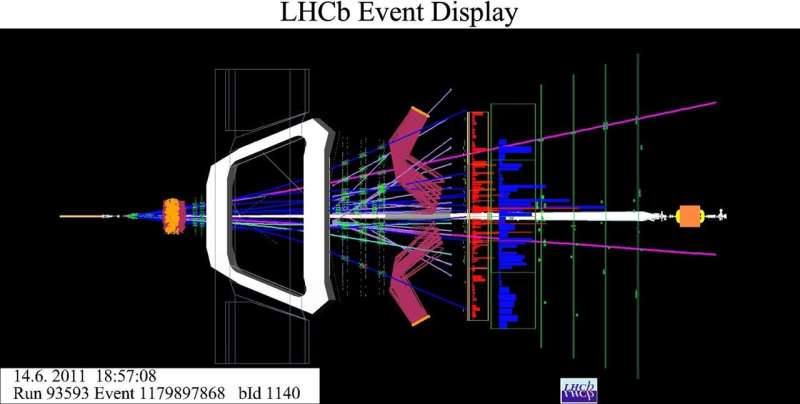.NASA's Orion capsule blazes home from test flight to moon
http://blog.naver.com/mssoms
http://jl0620.blogspot.com
http://jk0620.tripod.com
https://www.facebook.com/junggoo.lee.9

.NASA's Orion capsule blazes home from test flight to moon
NASA의 Orion 캡슐은 시험 비행에서 달까지 집으로 불타오릅니다

마르시아 던 NASA에서 제공한 이 사진은 달에서 돌아온 오리온 캡슐을 보여줍니다. 이 캡슐은 2022년 12월 11일 일요일 엄청나게 빠른 속도로 복귀하여 극적인 25일간의 시험 비행을 마치기 위해 멕시코에서 태평양으로 낙하산을 탔습니다. 이 임무는 2024년으로 예정된 프로그램의 다음 달 비행에 우주 비행사를 위한 길을 열어줄 것입니다. 크레딧: AP를 통한 NASA, DECEMBER 11, 2022
-NASA의 오리온 캡슐은 일요일 달에서 엄청나게 빠른 속도로 귀환하여 멕시코에서 태평양으로 낙하산을 타고 다음 달 비행에서 우주비행사를 위한 길을 열어줄 시험 비행을 마무리했습니다. 들어오는 캡슐은 음속의 32배인 마하 32의 속도로 대기에 부딪쳤고 과달루페 섬 근처의 바하 캘리포니아 서쪽으로 첨벙거리기 전에 화씨 5,000도(섭씨 2,760도)의 재진입 온도를 견뎌냈습니다. 해군 함선이 우주선과 조용한 탑승자를 회수하기 위해 신속하게 진입했습니다. 진동 센서와 방사능 모니터가 장착된 3개의 테스트 인형입니다. NASA는 하강과 물보라가 장관을 이루며 완벽에 가깝다고 극찬했습니다.
NASA 국장 빌 넬슨(Bill Nelson)은 휴스턴의 미션 컨트롤에서 "나는 압도당했다"고 말했다. "오늘은 특별한 날입니다. 우리는 이제 새로운 세대 와 함께 우주 깊은 우주 로 돌아가고 있기 때문에 역사적인 날입니다 ." 우주국은 현재 2024년을 목표로 하는 다음 달 궤도 비행을 위해 궤도를 유지하기 위해 성공적인 스플래쉬다운이 필요했습니다.
4명의 우주 비행사가 여행을 떠날 것입니다. 이어 이르면 2025년에는 2인이 달에 착륙할 예정이다. 우주비행사들은 50년 전 일요일에 마지막으로 달에 착륙했습니다. 1972년 12월 11일에 착륙한 아폴로 17호의 유진 서넌(Eugene Cernan)과 해리슨 슈미트(Harrison Schmitt)는 3일 동안 아폴로 시대의 최장 체류 기간인 타우루스-리트로(Taurus-Littrow) 계곡을 탐험했습니다. 그들은 12명의 문워커 중 마지막이었다.

NASA가 제공한 이 이미지는 2022년 12월 11일 일요일 달에 대한 3주간의 시험 비행이 거의 끝나갈 무렵 지구에 접근하는 오리온 우주선을 보여줍니다. 신용: AP를 통한 NASA
Orion은 11월 16일 케네디 우주 센터에서 NASA의 새로운 메가 문 로켓 에 실려 발사된 이후 달을 방문한 최초의 캡슐이었습니다 . 그것은 아폴로의 신화적 쌍둥이 자매의 이름을 딴 NASA의 새로운 아르테미스 달 프로그램의 첫 비행이었습니다. "Splashdown! Tranquility Base에서 Taurus-Littrow, 고요한 태평양 바다에 이르기까지 NASA의 달 여행의 최신 장이 끝납니다. Orion이 다시 지구로 돌아옵니다."라고 Mission Control 해설자 Rob Navias가 발표했습니다.
40억 달러 규모의 시험 비행 에 아무도 탑승하지 않았지만 NASA 관리자들은 특히 수년간의 비행 지연과 예산 삭감 이후 드레스 리허설을 시작하게 되어 감격했습니다. 늦여름과 가을에 연료 누출과 허리케인이 추가 연기를 공모했습니다. Apollo 후퇴에서 NASA는 일요일 휴스턴의 Johnson Space Center에서 스플래시 다운 파티를 열었습니다. 직원과 가족이 모여 Orion의 귀환 방송을 시청했습니다. 옆집 방문자 센터는 대중을 위해 배쉬를 던졌습니다. NASA의 Orion 우주선은 2022년 12월 5일 월요일에 달과 지구의 클로즈업 사진을 다시 전송했습니다.

승무원 캡슐과 테스트 인형은 2022년 12월 11일 일요일에 태평양 연안에서 물보라를 일으키는 것을 목표로 할 것입니다. 3주간의 시험 비행 후 샌디에고에서 우주비행사가 몇 년 안에 다음 비행을 할 수 있는 무대를 마련했습니다. 신용: AP를 통한 NASA
-25일간의 비행 후 Orion을 온전하게 되돌리는 것이 NASA의 최고 목표였습니다. 25,000mph(40,000kph)의 반환 속도(지구 저궤도에서 들어오는 것보다 훨씬 빠름)로 캡슐은 이전에 우주 비행에서 테스트한 적이 없는 새로운 고급 열 차폐막을 사용했습니다. 중력이나 G 부하를 줄이기 위해 대기 중으로 잠겼다가 잠시 건너뛰어 스플래쉬다운 영역을 정확히 찾는 데도 도움이 되었습니다. 넬슨은 이 모든 것이 눈부신 방식으로 펼쳐져 오리온의 안전한 귀환을 가능하게 했다고 언급했습니다 .
-스플래쉬다운은 원래 목표 지역에서 남쪽으로 300마일(482km) 이상 떨어진 곳에서 발생했습니다. 고르지 못한 바다와 남부 캘리포니아 해안의 강풍 에 대한 예보로 인해 NASA는 위치를 전환했습니다. Orion은 달에 근접하면서 225만 킬로미터(140만 마일)를 기록한 다음 집으로 향하기 전에 거의 일주일 동안 넓고 급습하는 궤도에 진입했습니다. 그것은 달에서 80마일(130km) 이내에 두 번 왔습니다. 가장 멀리 있을 때 캡슐은 지구에서 268,000마일(430,000km) 이상 떨어져 있었습니다.
Orion은 회색의 움푹 들어간 달뿐만 아니라 고향 행성의 놀라운 사진을 돌려 보냈습니다. 이별 장면으로 캡슐은 초승달 모양의 지구인 Earthrise를 보여주었고 미션 팀은 말문이 막혔습니다. 달이 이보다 더 뜨거웠던 적이 없습니다. 불과 몇 시간 전 일요일, 우주선이 케이프 커내버럴에서 달을 향해 로켓을 발사했습니다. 달 착륙선은 그곳 에서 경제를 발전시키려는 도쿄 회사인 ispace에 속해 있습니다. 한편 두 개의 미국 회사는 내년 초에 달 착륙선을 발사합니다. © 2022 AP 통신. 판권 소유. 이 자료는 허가 없이 게시, 방송, 재작성 또는 재배포할 수 없습니다.
https://phys.org/news/2022-12-nasa-orion-capsule-blazes-home.html
========================
메모 2212120552 나의 사고실험 oms 스토리텔링
아르테미스1 인형 우주인의 성공적인 지구귀환은 아르테미스2의 유인 우주선의 성공을 기대하는 기본 데이타를 얻은듯 하다. 새로운 기술들 중에 중력이나 G 부하를 줄이기 위해 대기 중으로 잠겼다가 잠시 건너뛰는 물제부 돌던지기 기술인 스플래쉬다운 영역을 정확히 찾는 데도 도움이 되었다. 착륙지를 정확하게 특정위치에 정하고 안전하게 도달하는 기술로써 향후 대규모 우주기지 플랫폼을 만드는데, 100만평 초대형 우주선이 이착륙하는 대단히 중요한 표준화 기술이다.
이 기술은 샘플a.oms.platform 버전이 지구나 달, 화성이나 유로파, 엔셀라두스, 타이탄에 수많은 크고작은 우주선들이 행성간, 위성간, 혹은 소행성을 드나드는 중요한 중력부하 제어기술이다. 허허.
Samplea.oms (standard)
b0acfd 0000e0
000ac0 f00bde
0c0fab 000e0d
e00d0c 0b0fa0
f000e0 b0dac0
d0f000 cae0b0
0b000f 0ead0c
0deb00 ac000f
ced0ba 00f000
a0b00e 0dc0f0
0ace00 df000b
0f00d0 e0bc0a
sampleb.qoms (standard)
0000000011=2,0
0000001100
0000001100
0000010010
0001100000
0101000000
0010010000
0100100000
2000000000
0010000001
sample b.poms (standard)
q0000000000
00q00000000
0000q000000
000000q0000
00000000q00
0000000000q
0q000000000
000q0000000
00000q00000
0000000q000
000000000q0
sample c.oss (standard)
zxdxybzyz
zxdzxezxz
xxbyyxzzx
zybzzfxzy
cadccbcdc
cdbdcbdbb
xzezxdyyx
zxezybzyy
bddbcbdca

-NASA's Orion capsule returned from the moon at lightning speed Sunday, parachuting from Mexico into the Pacific Ocean, completing a test flight that will pave the way for astronauts on next lunar flight. The incoming capsule hit the atmosphere at Mach 32, 32 times the speed of sound, and withstood reentry temperatures of 5,000 degrees Fahrenheit (2,760 degrees Celsius) before splashing west of Baja California near Guadalupe Island. A naval ship quickly moved in to retrieve the ship and its silent occupants. Three test dummies equipped with vibration sensors and radiation monitors. NASA praised the descent and spray as spectacular and near-perfect.
-Returning Orion intact after a 25-day flight was NASA's top goal. With a return speed of 25,000 mph (40,000 kph)—far faster than incoming from low-Earth orbit—the capsule used a new, advanced heat shield never before tested in space flight. It also helped me pinpoint the splashdown area by being submerged in air and then briefly skipping to reduce gravity or G-loads. Nelson noted that all of this played out in a dazzling way, making Orion's safe return possible.
-Splashdown occurred more than 300 miles (482 km) south of the original target area. Forecasts of choppy seas and strong winds off the coast of Southern California forced NASA to switch locations. Orion logged 2.25 million kilometers (1.4 million miles) as it approached the Moon, then entered a wide, swooping orbit for nearly a week before heading home. It came within 80 miles (130 km) of the Moon twice. At its furthest, the capsule was over 268,000 miles (430,000 km) from Earth.
========================
memo 2212120552 my thought experiment oms storytelling
The successful return of the Artemis 1 doll astronaut seems to have obtained basic data to expect the success of the Artemis 2 manned spacecraft. Among the new techniques, it also helped me pinpoint the splashdown area, a stone-throwing technique that briefly skips after being submerged in the air to reduce gravity or G-load. It is a technology that accurately sets the landing site at a specific location and reaches it safely. It is a very important standardization technology for taking off and landing a super-large spacecraft of 1 million pyeong in creating a large-scale space base platform in the future.
This technology, sample a.oms.platform version, is an important gravity load control technology that allows numerous large and small spacecraft to interplanetary, interstellar, or asteroids to Earth, Moon, Mars, Europa, Enceladus, or Titan. haha.
Samplea.oms (standard)
b0acfd 0000e0
000ac0 f00bde
0c0fab 000e0d
e00d0c 0b0fa0
f000e0 b0dac0
d0f000 cae0b0
0b000f 0ead0c
0deb00 ac000f
ced0ba 00f000
a0b00e 0dc0f0
0ace00 df000b
0f00d0 e0bc0a
sampleb. qoms (standard)
0000000011=2,0
0000001100
0000001100
0000010010
0001100000
0101000000
0010010000
0100100000
2000000000
0010000001
sample b.poms (standard)
q0000000000
00q00000000
0000q000000
000000q0000
00000000q00
0000000000q
0q000000000
000q0000000
00000q00000
0000000q000
000000000q0
sample c.oss (standard)
zxdxybzyz
zxdzxezxz
xxbyyxzzx
zybzzfxzy
cadccbcdc
cdbdcbdbb
xzezxdyyx
zxezybzyy
bddbcbdca

.Large Hadron Collider Beauty releases first set of data to the public
Large Hadron Collider Beauty, 첫 번째 데이터 세트 공개

CERN 에 의해 B 중간자가 뮤온과 반뮤온 쌍으로 붕괴하는 것을 보여주는 2011년의 LHCb 이벤트 디스플레이. 크레딧: CERN DECEMBER 9, 2022
-CERN의 LHCb(Large Hadron Collider Beauty) 실험은 광범위한 입자 물리학 프로그램을 통해 쿼크 맛 물리학에서 세계 최고의 실험입니다. LHC(Large Hadron Collider)의 실행 1 및 2에서 얻은 데이터는 지금까지 수많은 중요한 발견을 포함하여 600개 이상의 과학 출판물에 사용되었습니다. LHCb 협업의 모든 과학적 결과는 이미 오픈 액세스 논문을 통해 공개적으로 사용할 수 있지만 연구원이 이러한 결과를 생성하는 데 사용하는 데이터는 이제 CERN 개방형 데이터 포털을 통해 전 세계 모든 사람이 액세스할 수 있습니다.
-데이터 공개는 CERN의 개방형 과학 정책의 맥락에서 이루어지며, 60년 이상 CERN 협약에 명시된 투명성과 국제 협력의 가치를 반영합니다. "LHCb에서 수집된 데이터는 인류에게 고유한 유산입니다. 특히 다른 어떤 실험도 LHCb가 살펴보는 지역을 다루지 않기 때문입니다."라고 LHCb 공개 데이터 프로젝트의 리더인 Sebastian Neubert는 말합니다. "대중이 자금을 지원한 거대한 국제 협력 노력을 통해 얻은 것입니다. 따라서 데이터는 사회에 속합니다." 사용 가능한 데이터 샘플은 LHC Run 1 동안 2011년과 2012년에 LHCb 실험에서 수집한 전체 데이터 세트의 20%에 해당합니다. 이는 검출기로 필터링되고 기록된 양성자-양성자 충돌 이벤트에서 얻은 정보를 포함하는 200테라바이트로 구성됩니다.
-LHCb 협업은 복잡한 검출기 시스템에서 전달한 원시 정보에서 하전 입자의 궤적과 같은 실험적 서명을 재구성하여 데이터를 사전 처리했습니다. 데이터는 필터링되고 약 300개의 프로세스 및 붕괴에 따라 분류되며 LHCb 물리학자가 사용하는 것과 동일한 형식으로 제공됩니다. LHC 데이터 분석은 복잡하고 시간이 많이 걸리는 작업입니다. 따라서 분석을 용이하게 하기 위해 샘플에는 전처리에 사용되는 수백 개의 특수 용어를 설명하는 용어집뿐만 아니라 광범위한 문서와 메타데이터가 함께 제공됩니다.
-데이터는 오픈 소스 소프트웨어 로 제공되는 전용 LHCb 알고리즘을 사용하여 분석할 수 있습니다 . 이 데이터는 다양한 유형의 물리학 연구에 적합하며 누구나 직접 다운로드할 수 있습니다. "그것은 전문 과학자들이 사용하기 위한 것이고 그 해석에는 입자 물리학에 대한 어느 정도의 지식이 필요하지만, 누구나 시도해 볼 수 있습니다."라고 Neubert는 말합니다. "데이터가 새로운 연구 방향에 영감을 주고 데이터 과학 및 인공 지능 과 같은 다른 분야의 연구자들이 사용한다면 좋을 것입니다 . 우리는 데이터 사용자로부터 그들이 찾은 것을 듣고 싶습니다." LHCb 협업의 추가 데이터 릴리스는 향후 계획되어 있습니다.
추가 정보: CERN 개방형 데이터 포털 CERN 제공
https://phys.org/news/2022-12-large-hadron-collider-beauty.html
========================
메모 2212120552 나의 사고실험 oms 스토리텔링
CERN의 LHCb(Large Hadron Collider Beauty) 실험은 광범위한 입자 물리학 프로그램을 통해 쿼크 맛 물리학에서 세계 최고의 실험이다.
데이터 공개는 CERN의 개방형 과학 정책의 맥락에서 이루어지며, 60년 이상 CERN 협약에 명시된 투명성과 국제 협력의 가치를 반영되었다. 대중이 자금을 지원한 거대한 국제 협력 노력을 통해 얻은 것으로 데이터는 인류의 자산이다.
사용 가능한 데이터 샘플은 LHC Run 1 동안 2011년과 2012년 사이에 LHCb 실험에서 수집한 전체 데이터 세트의 20%에 해당합니다. 이는 검출기로 필터링되고 기록된 양성자-양성자 충돌 이벤트에서 얻은 정보를 포함하는 200테라바이트로 구성된다.
점점더 늘어날 데이타는 공개소스로 보기에는 나의 샘플링 처럼 간략정보로 (()정의역 처리가 될듯 하다. 예를들어 샘플a.oms는 무한대의 크기를 다루지만 대중적인 공개소스는 샘플a.oms.12th일뿐이다. 아무리 거대해도 특성은 동일하기 때문이다. 그러나 큰 스케일이 필요한 부분은 암흑물질이나 암흑에너지를 다루고 순간적인 우주이동 얽힘현상을 다룰 때, 샘플a.oms.vix.a(n!)용어를 쓴다. 허허.
중요한 사실은 이들 정보가 거의 거의 200억 구골 아담이브 사이즈급으로 구성된 점이고 공개소스이라는 점에서 대중적 스토리텔링이 필요한 점이다. 나의 이러한 오픈 소스에 인류가 다중우주의식을 가지고 과학적이고 철학적인 사유를 하기 바란다. 허허.
Samplea.oms (standard)
b0acfd 0000e0
000ac0 f00bde
0c0fab 000e0d
e00d0c 0b0fa0
f000e0 b0dac0
d0f000 cae0b0
0b000f 0ead0c
0deb00 ac000f
ced0ba 00f000
a0b00e 0dc0f0
0ace00 df000b
0f00d0 e0bc0a
sampleb.qoms (standard)
0000000011=2,0
0000001100
0000001100
0000010010
0001100000
0101000000
0010010000
0100100000
2000000000
0010000001
sample b.poms (standard)
q0000000000
00q00000000
0000q000000
000000q0000
00000000q00
0000000000q
0q000000000
000q0000000
00000q00000
0000000q000
000000000q0
sample c.oss (standard)
zxdxybzyz
zxdzxezxz
xxbyyxzzx
zybzzfxzy
cadccbcdc
cdbdcbdbb
xzezxdyyx
zxezybzyy
bddbcbdca

-CERN's Large Hadron Collider Beauty (LHCb) experiment is the world's leading experiment in quark taste physics with an extensive particle physics program. Data from runs 1 and 2 of the Large Hadron Collider (LHC) have so far been used in more than 600 scientific publications, including numerous important discoveries. While all scientific results from the LHCb collaboration are already publicly available through open access papers, the data researchers use to generate these results is now accessible to anyone around the world through the CERN open data portal.
-Data disclosure takes place in the context of CERN's open science policy, reflecting the values of transparency and international cooperation enshrined in the CERN Convention for over 60 years. “The data collected at the LHCb is a unique legacy to humanity, especially since no other experiment covers the regions that the LHCb looks at,” says Sebastian Neubert, LHCb Open Data Project Leader. “It was obtained through a huge public-funded international collaboration effort. So data belongs to society.” The available data sample corresponds to 20% of the total data set collected from the LHCb experiment in 2011 and 2012 during LHC Run 1. It consists of 200 terabytes containing information from proton-proton collision events that have been filtered and recorded by a detector.
========================
memo 2212120552 my thought experiment oms storytelling
CERN's Large Hadron Collider Beauty (LHCb) experiment is the world's leading experiment in quark taste physics through its extensive particle physics program.
Data disclosure takes place in the context of CERN's open science policy, which reflects the values of transparency and international cooperation enshrined in the CERN Convention for more than 60 years. Acquired through a massive, public-funded international collaborative effort, data is the asset of humanity.
The available data sample represents 20% of the total data set collected from the LHCb experiment between 2011 and 2012 during LHC Run 1. It consists of 200 terabytes containing information from proton-proton collision events that have been filtered and recorded by detectors.
The data that will increase more and more seems to be treated as a (() domain with brief information like my sampling to see it as an open source. For example, sample a.oms deals with infinite size, but popular open source samples a.oms. No matter how huge it is, the characteristics are the same. However, the part that requires a large scale is the sample a.oms.vix.a (n!) term when dealing with dark matter or dark energy and instantaneous cosmic movement entanglement. I write hee hee.
The important fact is that this information consists of terabytes the size of nearly 20 billion Googol and Adam Eve, and that public storytelling is necessary in that it is an open source. I hope that mankind will have a multiverse consciousness and have scientific and philosophical thoughts in my open source. haha.
Samplea.oms (standard)
b0acfd 0000e0
000ac0 f00bde
0c0fab 000e0d
e00d0c 0b0fa0
f000e0 b0dac0
d0f000 cae0b0
0b000f 0ead0c
0deb00 ac000f
ced0ba 00f000
a0b00e 0dc0f0
0ace00 df000b
0f00d0 e0bc0a
sampleb. qoms (standard)
0000000011=2,0
0000001100
0000001100
0000010010
0001100000
0101000000
0010010000
0100100000
2000000000
0010000001
sample b.poms (standard)
q0000000000
00q00000000
0000q000000
000000q0000
00000000q00
0000000000q
0q000000000
000q0000000
00000q00000
0000000q000
000000000q0
sample c.oss (standard)
zxdxybzyz
zxdzxezxz
xxbyyxzzx
zybzzfxzy
cadccbcdc
cdbdcbdbb
xzezxdyyx
zxezybzyy
bddbcbdca
댓글